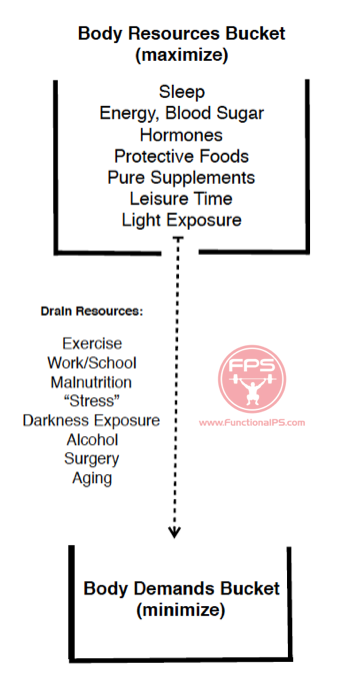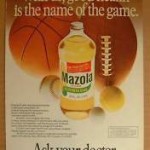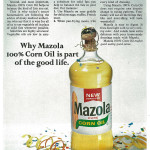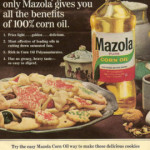Also see:
Toxic Plant Estrogens
Calcium to Phosphorus Ratio, PTH, and Bone Health
Calcium Paradox
Source of Dietary Calcium: Chicken Egg Shell Powder
Low CO2 in Hypothyroidism
Blood Pressure Management with Calcium & Dairy
Hypertension and Calcium Deficiency
Excess Dietary Phosphorus Lowers Vitamin D Levels
Fatty Acid Synthase (FAS), Vitamin D, and Cancer
Phosphate, activation, and aging
Parmigiano Reggiano cheese and bone health
Preparing Powdered Eggshells for Calcium
Dairy, Calcium, and Weight Management in Adults and Children
Key thoughts:
1. Low estrogen concentrations in milk.
2. More dietary fat equates to more estrogen content.
3. Goat milk has less estrogen than cow’s milk although both are low.
4. A study reporting high estrogen content in milk should also measure progesterone levels.
==========
J Dairy Sci. 2010 Jun;93(6):2533-40. doi: 10.3168/jds.2009-2947.
Estrone and 17beta-estradiol concentrations in pasteurized-homogenized milk and commercial dairy products.
Pape-Zambito DA1, Roberts RF, Kensinger RS.
Some individuals fear that estrogens in dairy products may stimulate growth of estrogen-sensitive cancers in humans. The presence of estrone (E(1)) and 17beta-estradiol (E(2)) in raw whole cow’s milk has been demonstrated. The objectives of this study were to determine if pasteurization-homogenization affects E(2) concentration in milk and to quantify E(1) and E(2) concentrations in commercially available dairy products. The effects of pasteurization-homogenization were tested by collecting fresh raw milk, followed by pasteurization and homogenization at 1 of 2 homogenization pressures. All treated milks were tested for milk fat globule size, percentages of milk fat and solids, and E(2) concentrations. Estrone and E(2) were quantified from organic or conventional skim, 1%, 2%, and whole milks, as well as half-and-half, cream, and butter samples. Estrone and E(2) were quantified by RIA after organic solvent extractions and chromatography. Pasteurization-homogenization reduced fat globule size, but did not significantly affect E(2), milk fat, or milk solids concentrations. Estrone concentrations averaged 2.9, 4.2, 5.7, 7.9, 20.4, 54.1 pg/mL, and 118.9 pg/g in skim, 1%, 2%, and whole milks, half-and-half, cream, and butter samples, respectively. 17Beta-estradiol concentrations averaged 0.4, 0.6, 0.9, 1.1, 1.9, 6.0 pg/mL, and 15.8 pg/g in skim, 1%, 2%, whole milks, half-and-half, cream, and butter samples, respectively. The amount of fat in milk significantly affected E(1) and E(2) concentrations in milk. Organic and conventional dairy products did not have substantially different concentrations of E(1) and E(2). Compared with information cited in the literature, concentrations of E(1) and E(2) in bovine milk are small relative to endogenous production rates of E(1) and E(2) in humans.
J Dairy Sci. 2007 Jul;90(7):3308-13.
Concentrations of 17beta-estradiol in Holstein whole milk.
Pape-Zambito DA1, Magliaro AL, Kensinger RS.
Some individuals have expressed concern about estrogens in food because of their potential to promote growth of estrogen-sensitive human cancer cells. Researchers have reported concentrations of estrogen in milk but few whole milk samples have been analyzed. Because estrogen associates with the fat phase of milk, the analysis of whole milk is an important consideration. The objectives of this study, therefore, were to quantify 17beta-estradiol (E2) in whole milk from dairy cows and to determine whether E2 concentrations in milk from cows in the second half of pregnancy were greater than that in milk from cows in the first half of pregnancy or in nonpregnant cows. Milk samples and weights were collected during a single morning milking from 206 Holstein cows. Triplicate samples were collected and 2 samples were analyzed for fat, protein, lactose, and somatic cell counts (SCC); 1 sample was homogenized and analyzed for E2. The homogenized whole milk (3 mL) was extracted twice with ethyl acetate and once with methanol. The extract was reconstituted in benzene:methanol (9:1, vol/vol) and run over a Sephadex LH-20 column to separate E2 from cholesterol and estrone before quantification using radioimmunoassay. Cows were classified as not pregnant (NP, n = 138), early pregnant (EP, 1 to 140 d pregnant, n = 47), or midpregnant (MP, 141 to 210 d pregnant, n = 21) at the time of milk sampling based on herd health records. Mean E2 concentration in whole milk was 1.4 +/- 0.2 pg/mL and ranged from nondetectable to 22.9 pg/mL. Milk E2 concentrations averaged 1.3, 0.9, and 3.0 pg/mL for NP, EP, and MP cows, respectively. Milk E2 concentrations for MP cows were greater and differed from those of NP and EP cows. Milk composition was normal for a Holstein herd in that log SCC values and percentages of fat, protein, and lactose averaged 4.9, 3.5, 3.1, and 4.8, respectively. Estradiol concentration was significantly correlated (r = 0.20) with percentage fat in milk. Mean milk yield was 18.9 +/- 0.6 kg for the morning milking. The mean E2 mass accumulated in the morning milk was 23.2 +/- 3.4 ng/cow. Likewise, using the overall mean concentration for E2 in milk, the mean E2 mass in 237 mL (8 fluid ounces) of raw whole milk was 330 pg. The quantity of E2 in whole milk, therefore, is low and is unlikely to pose a health risk for humans.
J Dairy Sci. 1979 Sep;62(9):1458-63.
Measurement of estrogens in cow’s milk, human milk, and dairy products.
Wolford ST, Argoudelis CJ.
Free natural estrogens in raw and commercial whole milk were quantitated by radioimmunoassay. The ranges of concentration of estrone, estradiol 17-beta, and estriol were 34 to 55, 4 to 14, and 9 to 31 pg/ml. Proportions of active estrogens (estrone and estradiol) in the fat phases of milk by radioactive tracer on separated milk were 80% and 65%. These findings were supported by radioimmunoassay of skim milk and butter. Equilibrium dialysis of skim milk with hydrogen 3 labeled estrogens showed that 84 to 85% of estrone and estradiol and 61 to 66% of estriol were protein bound. Whey proteins demonstrated a greater binding capacity than casein. This result was confirmed by radioimmunoassay of dry curd cottage cheese and whey. The concentrations in curd were 35, 11, and 6 pg/g. In whey they were 4, 2, and 3 pg/ml. The quantity of active estrogens in dairy products is too low to demonstrate biological activity. Butter was highest with concentrations of 539, 82, and 87 pg/g. Human colostrum demonstrated a maximum concentration of 4 to 5 ng/ml for estrone and estriol and about .5 ng/ml for estradiol. By the 5th day postpartum, they decreased to become similar to cow’s milk.
J Dairy Sci. 2012 Apr;95(4):1699-708. doi: 10.3168/jds.2011-5072.
Comparison of estrone and 17β-estradiol levels in commercial goat and cow milk.
Farlow DW1, Xu X, Veenstra TD.
Increased levels of estrogen metabolites are believed to be associated with cancers of the reproductive system. One potential dietary source of these metabolites that is commonly consumed worldwide is milk. In North America, dairy cows are the most common source of milk; however, goats are the primary source of milk worldwide. In this study, the absolute concentrations of unconjugated and total (unconjugated plus conjugated) estrone (E(1)) and 17β-estradiol (E(2)) were compared in a variety of commercial cow milks (regular and organic) and goat milk. A lower combined concentration of E(1) and E(2) was found in goat milk than in any of the cow milk products tested. The differences in E(1) and E(2) levels between regular and organic cow milks were not as significant as the differences between goat milk and any of the cow milk products. Goat milk represents a better dietary choice for individuals concerned with limiting their estrogen intake.
Iran J Public Health. 2015 Jun; 44(6): 742–758
Hormones in Dairy Foods and Their Impact on Public Health – A Narrative Review Article
Hassan MALEKINEJAD and Aysa REZABAKHSH












